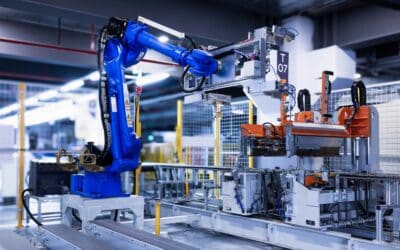You may have heard of a frame grabber for the first time when your image processor or integrator noted this part on his bill of materials. Or perhaps the term came up in the preceding discussion about your new machine vision solution. Either way, clarification is needed on what these frame grabbers are all about.
In this article, we bring clarity to the concept. In doing so, we answer the questions:
- What are frame grabbers?
- What is their function?
- When and why should you use them?
What is behind frame grabbers
Frame or video grabbers were originally developed to convert analog images into digital signals. This use has faded into the background nowadays, as most image processing systems are purely digital.
Instead, image processors today use frame grabbers to connect digital cameras to systems that do not have the same data interface – such as USB. In addition, frame grabbers are suitable for sending triggers with information about the status of image processing to a connected PLC or robot controller. They can also announce and send information about the exact scheduling of the incoming image data via their interface.
Function
Analogue frame grabbers typically consist of a sample-and-hold amplifier followed by an analogue-to-digital converter. This assigns a number to each incoming voltage. The analogue image becomes a digital number format, and digital communication of the image capture becomes possible.
With digital frame grabbers, this translation is no longer necessary. Instead, the acquisition is usually done here in a standardized image format via a PCI or PCI Express card in the computer. Additional functions and programmable parameters can be used to adapt the data conversion to a different format if required. Digital frame grabbers thus act as translators between different image formats.
More than just the transfer of image data
Since this translation service from image capture to machine vision always works via cable, frame grabbers allow precise predictions to be made about data speed and transmission. This is particularly crucial for time-critical tasks such as sorting out a defective part. Since frame grabbers are usually used with Gigabit Ethernet (USB and FireWire are also possible), data transfer can reach up to 25 GB/s. This means that latencies of less than 1 µ are achieved. This makes latencies of less than 1 µs possible. For extensive image data this is a real gain.
Advanced frame grabbers also perform a data check. This enables them to make reliable statements about whether all data was transferred as planned – or whether and, above all, where it was lost. This makes troubleshooting much easier.
The greatest advantage of frame grabbers, however, is certainly the bundling of the entire image acquisition process using one single device. Image processing solutions today are often multi-layered and not infrequently complex. The use of a frame grabber makes the management of this process much easier.
Grabbing functions allow faster processing
Frame grabbers are able to control all triggering and synchronization of the various image acquisition devices. Especially when multiple cameras and flash units are used. The fact that they can even implement image processing directly afterwards is an added bonus. This includes colour corrections, for example.
If the frame grabber already takes over simple image processing tasks, the CPU of the connected PC remains unburdened. This is made possible by the integrated Direct Memory Access (DMA) to the computer. In this way, the frame grabber can process the incoming data directly without any loss of time. The time savings are enormous.
Frame grabbers make demands
However, all these functions, connections and interactions come with a disadvantage: frame grabbers are by no means a trivial component in industrial machine vision. Their implementation and correct use require profound knowledge from the user in order to cope with the not always easy operation.
In addition, the frame grabber must be inserted into the processing PC. If a PCI bus grabber is to be used, a larger PC housing may be necessary. In some control cabinets it could become very tight.
When and why use it?
Frame grabbers are always used in image processing when a fast and reliable solution is required. This applies not only to the actual image capture and initial processing, but also when multi-part setups have to be synchronized. This is where frame grabbers really come into their own. Typical applications, in addition to recordings of sporting events, in industry are primarily time-critical quality inspections on production lines.
Find out more about the benefits of frame grabbers here.
But frame grabbers are not limited to this application. Would you like to know whether your machine vision solution would also benefit from such a system? Contact us! We will be happy to help you.



